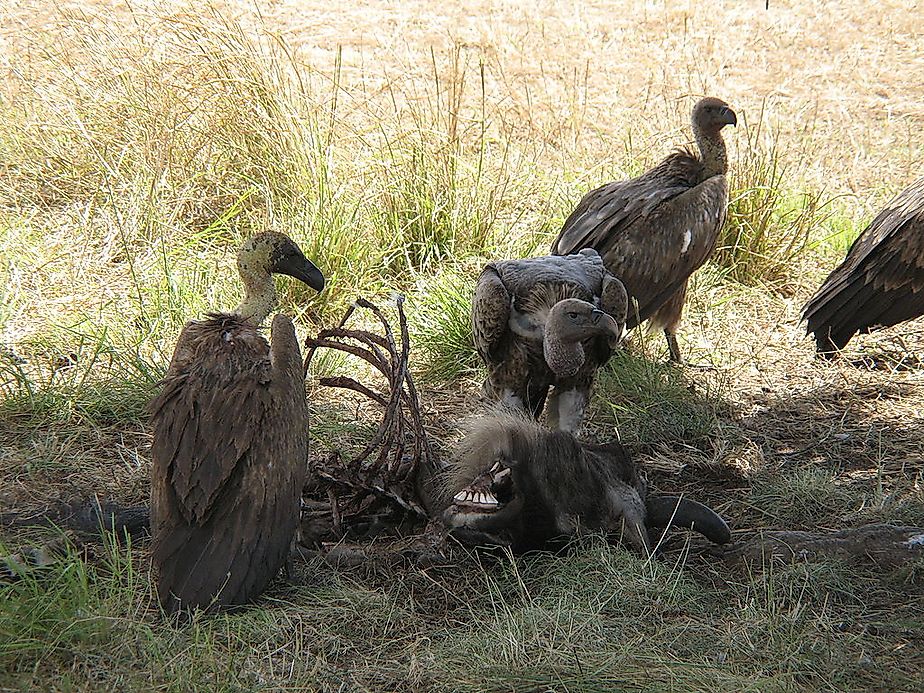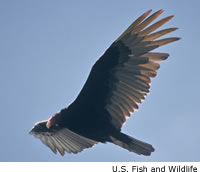
The possible factors influencing carrion use include the characteristics of the carcass itself 16, 21 (species, spatio-temporal location, disease status or cause of death), the ecology of the scavenging animal (species, body size, sociality, inter- and intra-specific dynamics), and abiotic factors 18, 19 (season, weather, habitat). Additionally, studies on naturally occurring carcasses are rare 18, 19, 20. While recent studies have shed light on the ecological 4, 14 and economic 15 importance of vertebrate scavenging, findings regarding the roles cues and constraints play in respectively promoting and limiting an individual’s propensity or ability to scavenge vary widely 8, 16 among ecosystems 17. In addition, scavenging shapes inter- and intra-specific interactions through competition 8, 9 and carrion has been shown to have positive and direct effects on the biomass and nutritional content of plants 10, 11, 12, 13. Decreases in the availability of carrion have been shown to alter scavenger population demography and increase mortality 5, 6, 7. The role of carrion in community ecology has only recently gained recognition as a critical resource in terrestrial ecosystems 1, 2, 3, 4. However, growing populations of turkey vultures may lead to increased competition with facultative scavengers over carrion, and could have cascading effects on food webs in this ecosystem.

We found that most carcass consumption was via facultative scavengers (bears, wolves, magpies, Corvus spp.) rather than turkey vultures, the only obligate scavengers in the study area. Scavenging efficiency was influenced inter alia by seasonality, distance to water, and elevation. We found that scavenger species diversity was higher at higher elevations and in grassland habitats. We used camera traps established at 13 carcass sites to monitor carcass detection, visitation, and consumption times, during 2016–2018 and generalized linear models to explore the influence of carcass characteristics, habitat features, and seasonality, on carcass selection and scavenging efficiency. Here we investigated differences in scavenging patterns in a complex scavenger guild in Southwestern Montana. Previous research found the cues promoting, or the constraints limiting, an individual’s propensity or ability to scavenge vary widely, depending on anthropogenic and environmental factors. Original article on Live Science.Scavenging of carrion shapes ecological landscapes by influencing scavenger population demography, increasing inter- and intra-specific interactions, and generating ecosystem services such as nutrient cycling and disease moderation. Follow Live Science, Facebook & Google+. 25) in the journal Nature Communications.įollow Laura Geggel on Twitter. "The avian microbiome is terra incognita, but it is not unreasonable to suppose that the relationship between birds and their microbes has been as important in avian evolution as the development of powered flight and song," said co-researcher Gary Graves, of the Smithsonian Institution's National Museum of Natural History. The findings suggest the relationship between microbes and vulture digestion is more complicated than previously thought, the researchers said. The vultures' bacterial similarities indicate that their digestive system has more influence on gut bacteria than diet does, the researchers said. Although the zoo animals had similar diets, the fecal bacteria from captive vultures more closely resembled the microbiomes of their brethren in the wild than it did their avian relatives in the zoo, the researchers found. The scientists also examined fecal samples from captive turkey vultures and other birds, such as the red-tailed hawk and African spotted owl, at the Copenhagen Zoo. "On the other hand, vultures also appear to have developed a tolerance toward some of the deadly bacteria - species that would kill other animals actively seem to flourish in the vulture lower intestine."īoth Clostridia and Fusobacteria appear to have adapted to the vultures' harsh gut conditions, but may also help the birds by further breaking down nutrients, the researchers said.

"On one hand, vultures have developed an extremely tough digestive system, which simply acts to destroy the majority of the dangerous bacteria they ingest," Roggenbuck said. The acidic GI tract also filters out many microorganisms that live on decaying carrion, so the large intestines have large amounts of Clostridia and Fusobacteria.


The DNA of their prey was broken down in the vultures' gut bacterial samples, which suggests the birds have harsh chemical conditions in their gastrointestinal (GI) tracts, the researchers found. Like other vertebrates, vultures had more types of bacteria on their faces than in their guts: 528 different types of microorganisms compared with 76.


 0 kommentar(er)
0 kommentar(er)
